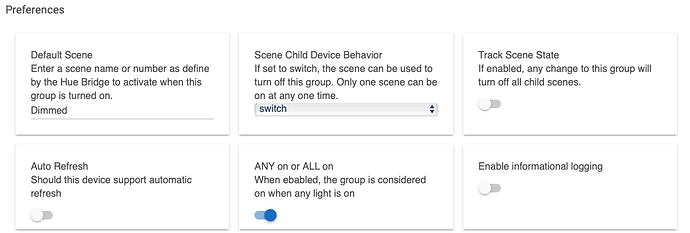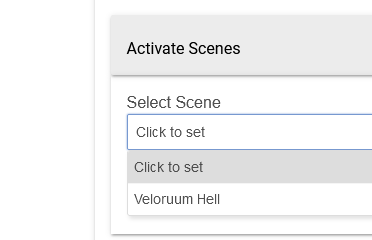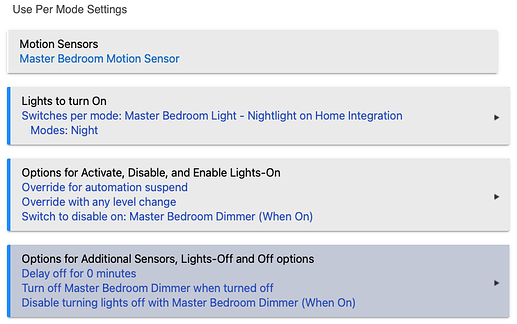Curios, what is app176? It seems that you have more than one integration that is unable to obtain child devices properly. I recommend upgrading your HE hub to the latest version. If you are creating custom rules, you will want the new Rules-5 and button controller 5.
Also, HE does have their own, official, Hue integration. I wrote mine to solve some very specific needs that the built-in system does not support. I also learned that there is another hue solutions that was released around the same time I released mine (maybe sooner, but I discovered it well after I released mine). I have not so much as even looked at the other driver, as I do not want my solution influenced by another. I do not know which is better at what. Before you get too far into it, you may want to consider the various solutions.
The default behavior of a scene is to not turn off the lights when the scene is turned off. Hue does not have an off option for scenes, as the scene is just a default collection of settings for the group. But, if the bulbs change state, the hue scene will no longer appear to be set, so I have an option for that. There is a setting in the group that is the parent of the scene.
Here are the settings available.
Default Scene allows you to enter the name, or Hue interval number of the scene. If the group is turned on, and no other options are defined (brightness, color, temp, etc), then the default scene is activated. Here, I have my office lights (two dimmable lights) set to also turn on to "Dimmed" scene when turned on.
Scene Child Device Behavior allows you to control the scene as a switch, or a trigger.
trigger - The scene will turn on, then turn back off. This changes the child device to a momentary switch.
switch - The scene will turn on, and stay on, until turned off. Only one scene can be active at any one time, so turning on any other scene will turn off the prior scene. When in switch state, turning off the scene, will turn off the group.
Track Scene State - If enabled, any change to this group will turn off all child scenes. That is, if you turn on the dimmed scene, but then change the level to a lower level, the child scene device will be turned off. This setting only applies to switch type scenes.
Auto refresh - If enabled, then the hub will poll the group for current state on the schedule you provide. After any device state is changed, a delayed full-hub-refresh is issued regardless of the state of this setting. This should only be required when you control your hue lights/groups/scenes from outside of the HE system.
ANY on or ALL on - If this setting is turn on, then the group will turn on when any light within the group turns on. When this is off, then the group must be turned on, or all lights must turn on for the group to be considered on. This is a HUE setting. HUE reports two states for groups, and this settings determines which one the HE group will refer to for on/off state.
So, for your need, set the group's Scene Child Device Behavior to "Switch" and set "Track Scene State" to on.
If you control your HUE devices outside of HE, turn on the refresh and set the timing to the longest delay you can tolerate. if you have more than a few groups, consider using the refresh interval of the hub device instead of the groups.
In my setup, I configure my echo devices to point to HE for Hue control, and do not integrate Hue to anything at all. If I need direct control of Hue I use the Hue app. Generally, I don't need that unless the HE hub is offline.










